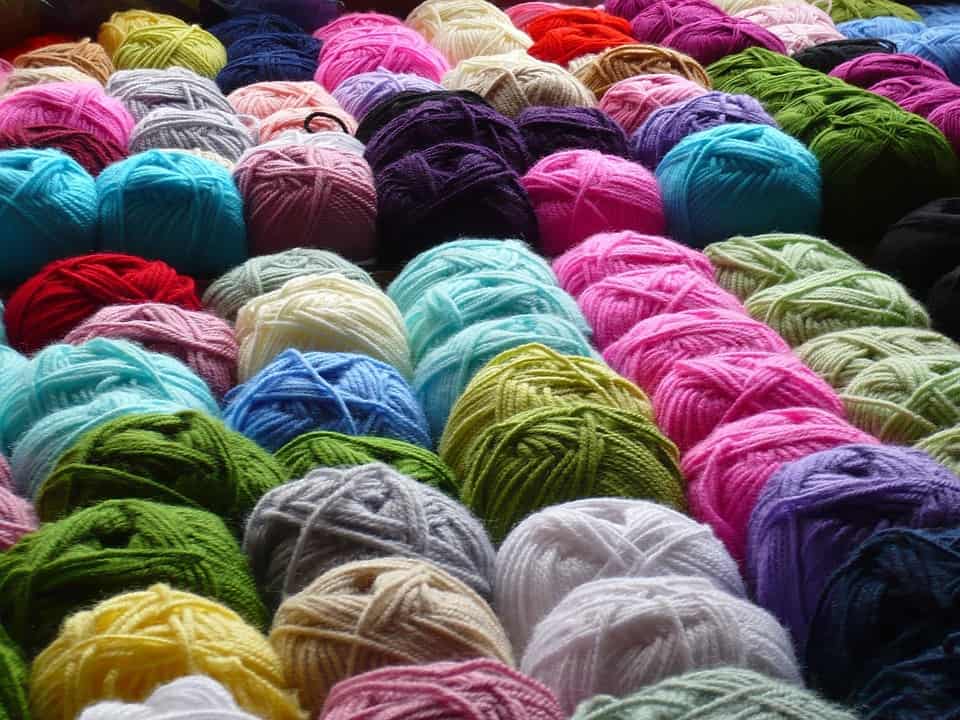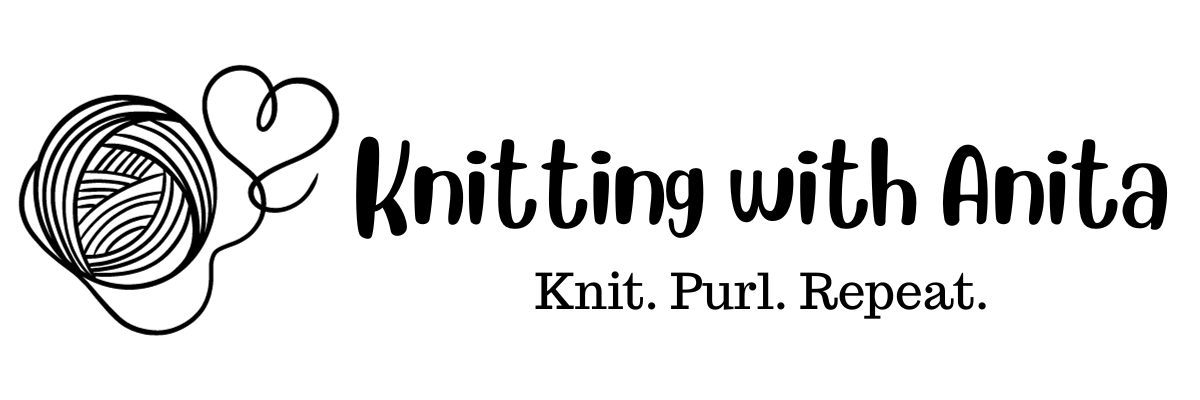 Yarn is the first and most important decision when you start a knitting project
Yarn is the first and most important decision when you start a knitting project
Learning to knit requires knitting material, specifically, yarn. Ah, but what KIND of yarn should you use? To answer that question, I must first describe all the different types/sizes of yarns that are ‘out there.’
Sizes
Yarn sizes are assigned numbers based upon the thickness of the yarn. These thicknesses range from size 0 to size 6. Lace weight yarn is labeled ‘0.’ This type of yarn works best on lacy, light-weight projects. This is the lightest weight yarn available. It also includes the light-weight crochet thread used to make doilies, bedspreads, and other fine projects. Lace-weight yarn ranges from 7 to 8 stitches per inch, on size 000 to size 2 needles. (More about needles later.) Lace-weight yarn produces a beautiful fabric but can be frustrating to work with if you’re a beginner or have difficulty seeing.
Size 1
Super-fine yarn, identified as size 1, works up beautifully for baby projects, socks, and other delicate projects. This yarn works up 6-7 stitches per inch on size 1-3 needles. I’ve seen some beautiful cowls made from this weight yarn.
Size 2
Fine yarns, size 2, consist of sock yarns, baby yarns, sport yarns, and light DK (double knitting) yarns. (Double knitting will be addressed later.) These yarns make beautiful light-weight socks, baby hats, and lacy shawls and cowls. You’ll get 5-6 stitches per inch on size 3-5 needles. One of my WIP (works in progress) is a cowl/hood made with a beautiful size 2 yarn in sky blue. Maybe someday I’ll actually finish it!
Size 3
Light yarns, size 3, consist of DK yarns and light worsted weight yarns. These yarns are often used in baby projects such as sweaters, hats, and blankets. They make beautiful shawls and scarves, as well. This yarn produces a gauge of about 5 ½ stitches per inch on size 5-7 needles. I’ve seen some beautiful socks, hats, and shawls produced from yarn this size.
Size 4
Worsted weight yarn, size 4, is probably the most commonly used of all the yarn sizes. You can knit anything with worsted weight yarn, from lacy shawls to warm blankets or afghans to baby sweaters. Even socks lend themselves well to worsted weight yarn, especially in cold climates where warmth is most important. Worsted weight yarn works up 4-5 stitches per inch on size 7-9 needles. Most of the projects I’ve finished are in this weight class. I’m working on a gift for someone right now using worsted weight yarn, and it’s fun to see the fabric knit up fairly quickly.
Size 5
Bulky yarn (size 5) and super bulky yarn (size 6) are the heaviest weight yarns. Commonly used for large or heavy projects, they work up really fast due to their large width. These yarns work up to 3-4 stitches per inch on needles size 9 or larger. Using a super bulky yarn and size 50 needles, a knitter can make a decent sized blanket in a weekend! I’ve found some wonderful patterns for blankets using this larger yarn. When I make a significant dent in my project list, I’d love to knit a blanket using my size 50 needles and a big, thick size 6 yarn.
Will you remember all this? Of course not! So, whenever you need a refresher on yarn sizes, you can click here for a handy-dandy chart with yarn weights and needle recommendations.
Yarn Types
So now that we’ve talked about yarn weights, what about the materials used to make yarn?
Acrylic
The most readily available and least expensive is acrylic yarn. Acrylic yarn comes in all sizes, from lace-weight yarn all the way to super bulky. Acrylic yarn has a wonderful quality in that you can toss it in a washer and dryer. Yep, this man-made material won’t shrink! Some brands make a soft knitted fabric; some brands can be a bit scratchy. Lion Brand yarn makes a nice, soft acrylic yarn called Vanna’s Choice that is soft and reasonably priced.
Wool
Wool yarn is wonderfully warm, but some folks can be allergic to 100% wool. It is often blended with another material; mohair, silk, cashmere, and bamboo are some of the most common blends with wool yarn. Some brilliant soul even came up with a wool blend that is machine washable! Felting with wool—making an article of clothing or decoration, then washing the article in hot water until it shrinks to the desired size—obviously must be done with a wool yarn that will shrink. Felted articles are really thick and very warm, so if you’re living in a cold climate or knitting for someone who does, felting is a great way to produce a really thick, toasty warm article of clothing like hats, mittens, or scarves. Red Heart makes a beautiful wool yarn. Click here to take a look!
Plant
Yarns can be made from virtually any plant material. Cotton and linen are two of the most common plant materials used. I love knitting dishcloths with cotton yarn! If you’re knitting a summer tank top or light sweater, using cotton or linen produces a beautiful, light-weight and cool fabric. Lily’s Sugar and Cream cotton yarn works up fast and easy.
By-the-way, any fabric store or craft store will likely carry the yarn, and Wal-Mart always has a decent stock of colors. Cotton yarn is easy to launder. Linen yarns can also be machine washed and actually become softer and shinier with each laundering. Shibui makes a beautiful line of linen yarn. Many LYS (local yarn shops) carry it.
More Exotic Yarn
Of course, I can’t forget to mention some of the remarkable novelty yarns on the market. From yarns that have cute little bobbles attached to yarn made from alpaca and dog hair to the warmest yarn ever manufactured called Qiviut, novelty yarns can be fun and challenging to work with knitting needles. They can also be expensive; a 2-oz. ball of Qiviut, which has 437 yards, is priced at $220.00 per ball!
Shopping for yarn can be an incredible experience. Whenever I walk into an LYS, no matter where I may be, I stop for a moment to take in the atmosphere and ambiance of the store. I love the smell of new yarn! Most yarn shop employees love to help customers find a yarn for a new project or work out a problem on an existing project. Be sure to search out and visit your LYS.
Happy Knitting
Anita
